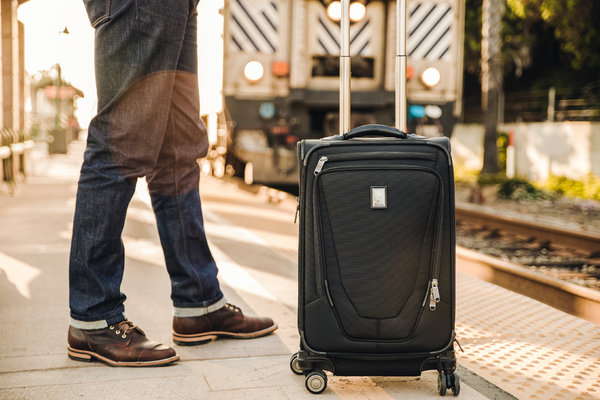A little bit of silence. Sometimes that’s all we want. Whether it’s halfway through a 10-hour flight with a crying baby, or trying to sleep though the snoring from the hotel room next door, the promise of noise-canceling headphones is one that every traveler probably finds intriguing.
Yet are they worth it? These headphones are often expensive and for some people, they don’t live up to the hype.
I’ve spent the majority of the last five years traveling, taking dozens of flights and train journeys, and as someone who has reviewed noise-canceling headphones for even longer, I can definitively say “maybe.”
How (and when) noise-canceling headphones work
Noise-canceling headphones, also called active noise canceling headphones, use electronic processing to analyze ambient sound and attempt to generate the “opposite” sound. The result is less noise overall.
Imagine ocean waves. There’s high part, the crest and the low part, the trough. If you combined the positive height of the crest and the negative depth of the trough, the result would be a flat sea. Or for the math inclined, if you add +1 and -1 you get 0. This is essentially what active noise-canceling headphones do. Add troughs to crests and crests to troughs. Except instead of seawater, it’s sound waves.
It’s not perfect. these headphones don’t “create” silence, nor are they able to eliminate noise. The crests and troughs do not perfectly cancel out. The absolute best noise-canceling headphones merely reduce noise, and work best with low-frequency droning sounds. So a loud hum is a quieter hum. The roar on an airplane is a quieter roar on an airplane. They also don’t work well for all sounds. At higher frequencies, like the human vocal range and higher, the headphones do very little if anything at all. So if your hope is to block out the cries of the baby in seat 15C, you’re out of luck. Fast and transient sounds, like a door slam or a hand clap, also aren’t blocked effectively.
What’s perhaps even more frustrating is not all noise-canceling headphones work the same. The best reduce a lot of noise, the worst reduce very little or nothing at all. There’s no way to tell, looking at a headphone’s specs, which are which.
Two headphone sets could claim to reduce the same amount of noise but perform completely different. Only hands-on testing, ideally with objective measurements, can tell the difference. Wirecutter, the New York Times Company that reviews products, does these types of measurements for all the noise-canceling headphones they test. (For Wirecutter, I’ve written both the over-ear and in-ear noise-canceling headphone guides along with my colleague Brent Butterworth.)
Noise-canceling headphones require a battery to power their electronics. Noise-isolating headphones, which do not require electronics and therefore can be far cheaper, work by creating a seal in your ear canal to block noise. Basically they are like earplugs, but with earbuds inside. If you can get a good seal, these work reasonably well.
Getting a good seal can be a challenge, however, since everyone’s ears are different and not all headphones will fit correctly. And even if you do get a good seal, noise-isolating headphones will not be able to block low-frequency sounds as well as the best noise-canceling headphones. They will reduce a wide range of frequencies, which can help.



Who really needs noise-canceling headphones?
If you are a frequent traveler, good noise-canceling headphones will make any journey in a plane, train or automobile far more pleasant. Even after a 12-hour flight, I’m not nearly as fatigued on arrival, thanks to the lower auditory onslaught.
In-ear models are easier, though still slightly uncomfortable, to sleep with and are my preference. Over-ear models reduce a little more noise as they are able to passively block some sound because of their design, but they are always bulky on your head or in your bag. After I stopped reviewing these headphones for Wirecutter, I bought a pair of Bose QuietComfort 20s, a longtime Wirecutter pick, and I never fly without them.
However, if you rarely travel, or you find higher-frequency noises like people talking, cars honking and noisy neighbors more annoying than airplane engine noise or background chatter, these headphones may not be worth it. Cheap earplugs, or perhaps noise-isolating earbuds, might work well enough. And it’s worth keeping in mind that for the same money, regular headphones will likely sound better than noise-canceling headphones.
Wirecutter has a review I wrote for earplugs to sleep in, and it might give you some ideas for which headsets to buy. As earplugs are lower in cost, they might be worth trying first.
Overall, I think noise-canceling headphones are great, but I also travel frequently and have expectations about how well these headphones work. For non-frequent travelers, however, this product might not necessarily be the must-have travel accessory that they might seem.
Geoffrey Morrison is the editor-at-large for Wirecutter whose work has also appeared on CNET. He wrote the best-selling sci-fi novel “Undersea,” and you can follow him on Instagram or Twitter.






